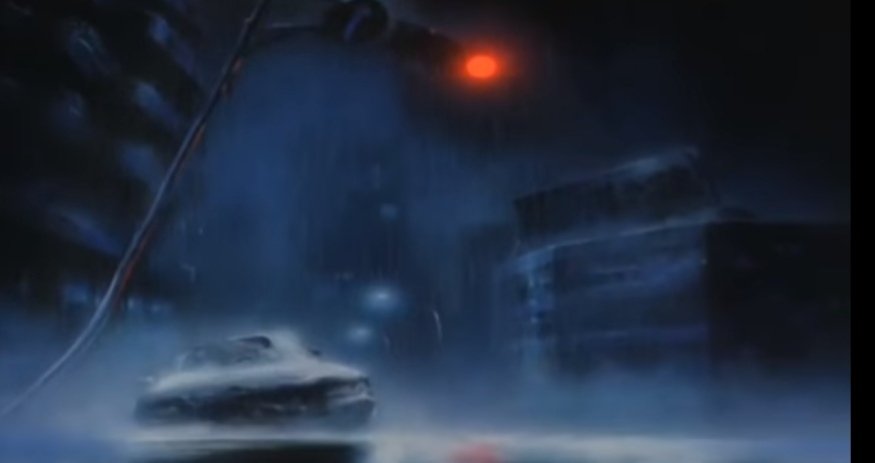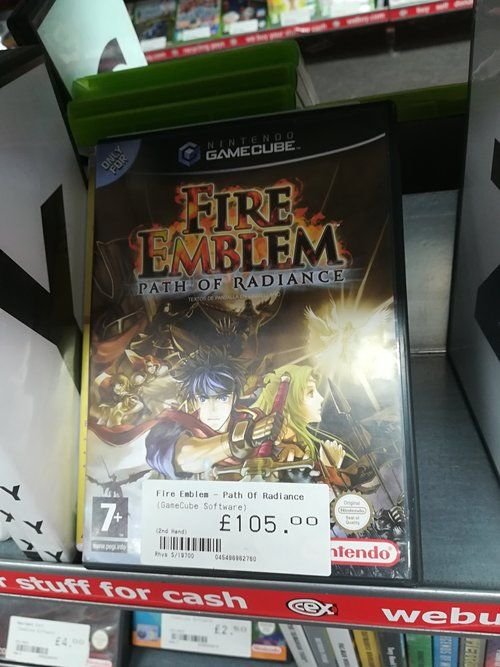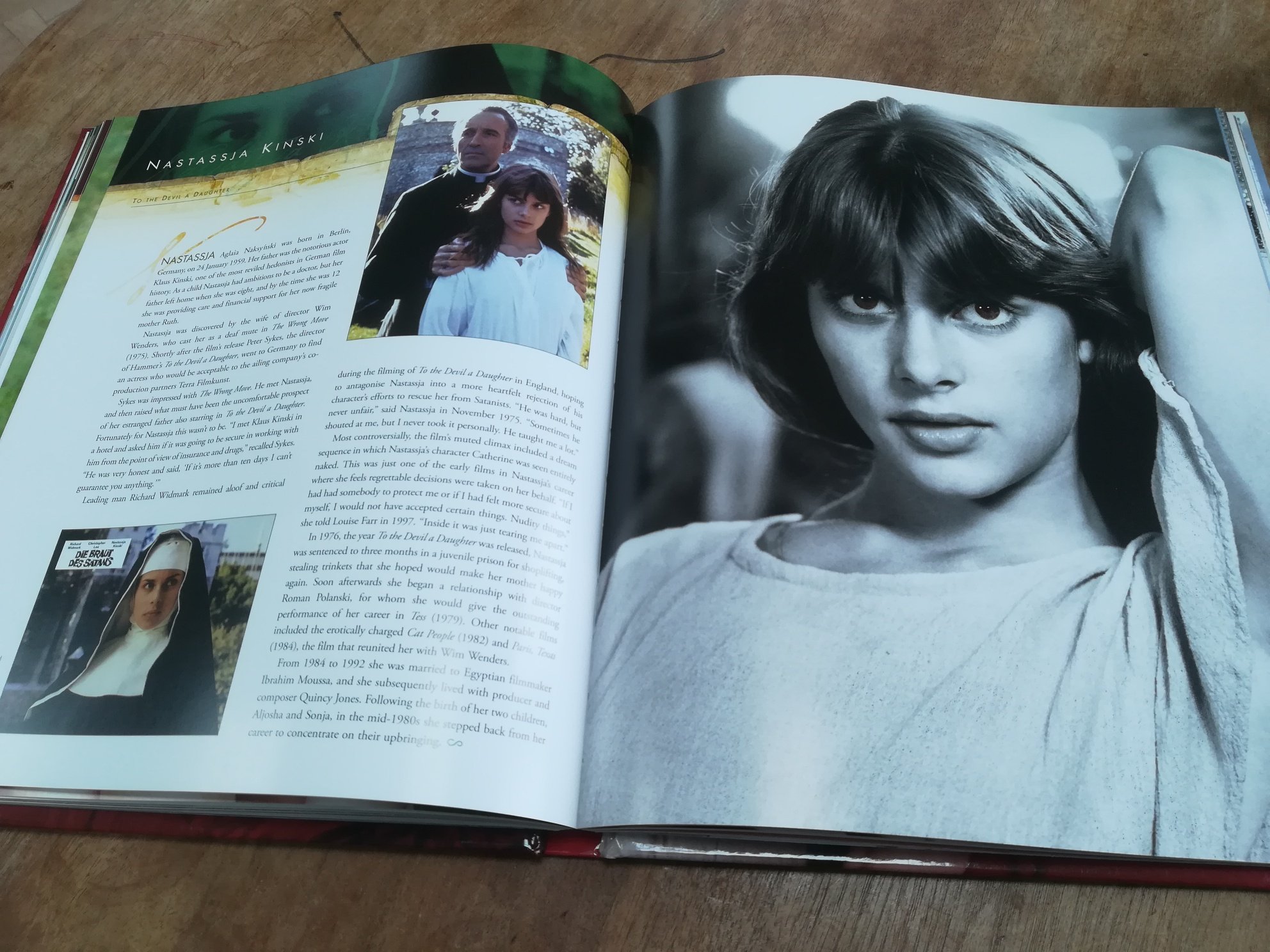The series tweaks the 'tenets of genre' to create something all together more interesting. Anyways, here are my thoughts on the individual episodes:
Witching Time
On a dark and stormy night, whilst home alone, married man David finds a beautiful woman in his barn claiming to a witch from the 17th century. Thinking her a kooky eccentric, he humours her before locking her in a room and calling for a doctor.
Upon arriving, the witch disappears and the doctor thinks David is overworked and hallucinating. He gives him some stronger pills but the witch comes back and starts to wreak havok upon him and his returning wife. Things quickly go downhill as we don't know if David is self-sabotaging or if there actually is a witch who has a hold of him.
This is an interesting episode as it is quite meta in that David is the sound mixer for horror films and he is being haunted himself. The slow deterioration of his mental health as the witch takes hold is interesting to see. It's a pretty solid episode and had me intrigued throughout.
The Thirteenth Reunion
When a new dieting clinic seems to be getting astonishing results, a roving reporter goes undercover to investigate the secret of their success. She sees a tough love affair where people are insulted into 'thinking themselves thin'. She bonds with a fellow 'fatty' but when he unexpectedly dies after a road accident her suspicions are raised as this seems to be happening quite regularly.
This episode goes some places and what I initially thought of as some body harvesting scam definitely ends up something much more sinister and weird. The tension is cranked up all the way through and the ending is not what I expected at all.
Rude Awakening
When an estate agent is given a property to put up for sale, he visits it but gets more than he bargained for when the manor is a state of ruin. What follows is a weird mystery about a recurring nightmare and whether the agent is losing his mind or maybe his subconscious is suffering from guilt from the murder of his wife.
Denholm Elliot shines as a cocky cockney everyman estate agent who ends up getting himself caught up in a bit of a mess when visiting the property. He plays it well, sliming it up with his young secretary in various states of fantasy attire as he tries to work out what is going on. The ending is typically dark and catches you off guard as dreams and reality merge.
Growing Pains
A young boy dies after trying some of the growth formula that his research scientist father is using on rabbits to end world hunger. A short while later, the parents adopt an orphan who has a rabbit toy and an interesting personality. When visions of the dead son appear and the pet dog starts to behave strangely, the parents question their sanity.
This is a quirky episode as the boy who eats the medicine is dopey. I mean, who goes into their father's scientific lab and scoffs strange liquids and powders from a random jar on a shelf? The boy is about 10 years old so should definitely know better. Anyways, the replacement boy plays a slightly creepy role well and the setup is intriguing. The story goes place you would not think it would go and that keeps you on your toes.
The House That Bled to Death
When a young couple and their daughter move into a house, little do they suspect that their house was the scene of a gruesome murder some years ago. As they try to bed in, unsettling things seem to be happening around them... almost as if the house wanted revenge.
This is a solid episode with lots of shocks and scares as the tension slowly escalates. The blood flows generously but, once again, the episode goes to a different place.
Charlie Boy
When a friend dies, a photographer and his friends get a chance to rifle through his things and take souvenirs home. When the photographer takes an African fetish doll, known for being used in witchcraft, people start to die. Will he make it in time before his wife and he succumb to its dark power.
This is a great episode about the power we give objects. Is it the fetish or is it the paranoia and coincidence of it all? This episode is great and it was wonderful to see the young familiar face of Angela Bruce as the wife of the photographer. The relationship between the interracial couple was loving and they treated each other like equals which was surprisingly more sensitive than what I have been used to from shows from that era. Fair play to the show for doing that.
The Silent Scream
When a habitual petty thief is released after two years inside, he finds a job at a local petshop run by Peter Cushing. When tasked with feeding the trained exotic animals he keeps at the back whilst he's away, the thief tries to open a safe and is caged. Will his wife help him get out or will the thief be trained to curb his thieving ways.
Cushing is excellent in his role as a mad scientist who looks at creating a prison without walls. He is seemingly sane and his idea has merit in principle but at what cost to civil liberties and freedom?
Children of the Full Moon
After their car careens out of control, a young couple find themselves out in the sticks in the late afternoon. They find refuge in a creepy old country house in the care of an old lady and loads of orphan children. As the night draws in, the sound of wolves can be heard and the children start to act strangely. Whatever can it all mean?
This is a great episode with Diane Dors camping it up as the old lady of the creepy manor house. This is considered one of classics of the series and is so highly regarded due to the gothic feel of the mansion, creepy woods and quite good makeup work.
The Carpathian Eagle
When a series of men are murdered, with their hearts ripped out, an old legend seems to be bubbling to the surface. A police officer and a murder-mystery author try to get to the bottom of the serial killers crimes on this short thriller.
The central conceit of this episode is great as it plays out like a crime procuderal but has the obvious supernatural elements, much like Kolchak: The Night Stalker. This episode was a firm favourite of mine as there is a great central mystery.
Guardian of the Abyss
When an antique dealer comes across a scrying glass his world is turned upside down as satanists and an escaped sacrificial victim cross his path. When his scrying glass- which may have been Dr Dee's original one- is stolen, he goes on a hunt to find it and save the glamourous sacrifice at the same time.
It's an intriguing episode as the poor guy just wants to flip the item to get some moolah but he's caught up in a demonic mess involving Enochian, Choronzon and Aleister Crowley. Fascinating stuff with a dramatic and powerful ending.
Visitor from the Grave
When a rapist is killed by his prospective victim, his body is concealed to hide the crime. However, as she struggles to reconcile her life with the crime she slowly starts to unravel as she sees the face of the rapist in her everyday life. Maybe a Swami from India can help, for a high fee of course.
This is a slow burn episode as the action happens right at the beginning and it's all about the trauma and unravelling as the victim goes all swiveleyed and anxious. This episode is not very sensitive at all but it isn't as egregious as much other media from the time- the portrayal of a woman who has gone through a traumatic experience isn't very sensitively handled whilst the brown face of the Swami is pretty racist but this was par of the course for the time and should be considered through those optics. Thank gosh things have moved on somewhat and we live in more enlightened times.
The Two Faces of Evil
When a family on a country drive pick up a hitchhiker during a storm it doesn't go well as he attacks the family. Waking up in a hospital the family try to get back to normal but life is forever changed. The question is: has the hitchhiker gone for good?
This is an excellent episode as the sense of claustrophobia is achieved through tight and unusually low camera angles. It disorients you as you watch the episode and even the staff at the hospital look sinister from that angle. It's quite an achievement on such a low budget. The concept of a doppelganger is intriguingly covered in this episode and the chase at the end suitably dramatic.
The Mark of Satan
When a novice who works in a morgue is accidently pricked with the bloody neddle of a corpse who claimed to have been protecting his soul through self-drill applied trepanning, he undergoes an interesting transformation. He starts seeing patterns everywhere and is worried that there is a conspiracy against him.
I liked this episode as the number 9 is a recurring motif and occurs frequently throughout. I wonder if the creators of Inside Number 9 were inspired by this particular episode as they do cite this series as a foundational text within their ouvre.
Overall, I really enjoyed this anthology series. I can see how it has influenced many shows including Inside Number 9, Black Mirror, The League of Gentlemen and The Mighty Boosh. It's a quirky series that looks at the evil that lurks beneath the normal veneer of polite (and not so polite) society.
The series can be pretty bleak and I think a lot of it is to do with the way it represents an empire in decline. Britain held much of the world in its grasp for hundreds of years and the stripping away of this worried much of society. This anxiety brought fears of class, eugenics and 'replacement theory' to the fore- maybe that's why so many of the shows of the time are to do with class, a structure that very much exists in Britain but many will deny whilst claiming that we live in a meritocracy. Looking at the sorry state of current politics puts paid to this veneer as vestiges of this illusion are removed-as it was in the 80s when this show was create and aired.
The cultural vandalism, misappropriation and bastardising of certain principles, values and societal narratives are things that happen all the time. One only has to look at social media with its 'the way things were' photographs of yesteryear to see the guise of nostalgia wrapped in right wing anemoia. Read the comments to see the vitriol spewing forth. This show looks at the worries and concerns from the time and amplifies them through the lens of horror.































